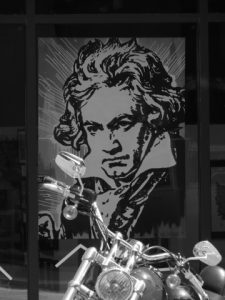
Complexity, for leaders who are accustomed to making things happen, is an uncomfortable space. Lack of predictability can trigger us in ways that reduce our resourcefulness when we need it most.
As a ready example, note your own reaction to the recent US election. What has been your mood? How are you reacting to breaking news? How do you feel this in your body?
Whatever your belief system, we live in very unpredictable times. And, this has profound effects on our moment-by-moment experience.
Complexity triggers our attachments and aversions. Where we sense opportunities to reinforce our identity, our energy ramps up and we act to build ourselves up.
Conversely, when we feel under threat, aversions arise. We naturally act from fear when our sense of who we are is put at risk by circumstances we can’t control. Both attachments and aversions are likely to cause us to respond in ways that are less than helpful.
Awareness of our internal experience, and specifically of the physical sensations that are always present within us, turns out to be a powerful doorway for resilience and creativity.
Please try this brief experiment.
Take a brief break from reading. (I know, I know… it’s a cliffhanger and you’re super busy and you just want to get the takeaway and move on. But, consider …. right now, you’re actually either avoiding doing something you don’t want to do. Or, you’re seeking to learn something new. Either of these will be well served by your taking an actual break. Pausing is a win either way. Trust me on this!)
Now, read this paragraph. Then close your eyes. With awareness, take a full inhale, hold it briefly, and then allow a very long, slow and complete exhale through your nose. Be fully present. Sense the breath exiting your nose. Feel your chest and torso settling. At the end of the exhale, notice how you feel different. Specifically, what changed? Identify three words that describe how you feel different. Now, close your eyes and do this…..
— Pause for experiment! —

These three phenomena did not happen because you took a breath. You take many thousands of breaths every day. Whatever changed did so because you directed your attention to your breath, and more generally, into the sensations that are constantly present in your body.
The experiment asked you to shift your attention from cognition (like the reading and meaning-making you’re doing in this moment) to the present-moment sensations that arise in your body (like during the breath pause.) You could repeat the breath pause, and if you do it sincerely and with attention, you will get very similar results.
By experimenting in this way, we can discover many amazing things. Here are just a few; there are many more. All come factory-loaded in the world-class performance package included with your precious human body!
- in any moment, we can choose where to direct our attention
- we have an attention selector. Neuroscientists call this “executive control.” It is like the channel selector on a TV, that can be used to direct our attention where we choose
- inside us is a wealth of constantly changing and dynamic experience
- sensations provide rich information about ourselves, including how we are reacting to our context
- directing attention itself changes, and regulates, the condition of our entire nervous system
- attention brings us into the present moment, making us immediately more aware, creative, and resourceful.
There is a lifetime of fascinating things about the workings of human consciousness to explore here. Please don’t take these claims on faith. Investigate for yourself. Verify, from your own experience, how these claims hold up.
****************
Complexity is a feature of our context. We are constantly being buffeted by events, many of which are unpredictable and therefore triggering. This requires different ways of leading than we are prepared us for.

Leaders are trained to observe the world, collect data, and base decisions on that data. It is crucial for leaders to recognize the dynamics of complexity in our context.
However, if we focus our attention exclusively on what’s happening in the world, we will gain important information. And, we will miss essential information about our internal condition, as we are reacting to this context.
Attention practices are essential. We must learn to sense, within our own aliveness, how our context is affecting us. This is revealed, with immediacy and clarity, in the rich tapestry of sensation-based information within us. It is revealed only in the present moment.
From this foundation of awareness, we can build the capacity to cultivate inner conditions of our choosing. We can learn to lead in complex and dangerous times with creativity, resourcefulness, spaciousness, and choice.
This is not futuristic. This is now. The exponentially increasing risks and complexity as we face a very uncertain future require this of all of us.
I invite your reflections and comments:
- How, specifically, do you experience triggering inside yourself in the current context?
- What do you sense is being asked of you now?
- What are you doing to resource yourself in order to respond creatively to this context?










